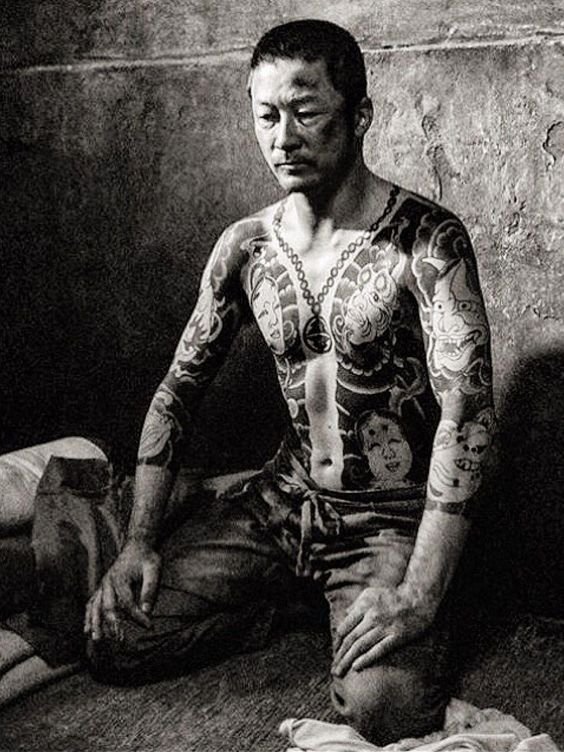Irezumi Tattoos: Unveiling Japanese Culture, History, Symbolism, and Artistry

Japanese culture has always been admired for its rich symbolism and complexity, which has spread to other creative forms. A complex tapestry of history, meaning, and craftsmanship, the ancient tradition of irezumi tattoos stands out among these forms of artistic expression. The subtle intricacies of Japanese society are reflected in these alluring tattoos, showing both their beautiful design and the significant cultural importance they bear. This article explores the fascinating world of Japanese irezumi tattoos, exploring its illustrious history, elaborate symbolism, link to the yakuza, and a remarkable level of artistic skill that gives life to these tattooed masterpieces. Throughout history, tattoos have played a vital role in many cultures, acting as indicators of rank, identity, and artistic expression. The practice of tattooing, known as irezumi in traditional Japanese culture, has a long history and a complex meaning that goes well beyond simple aesthetics. This article explores the history of Japanese irezumi tattoos, their relationship to the yakuza, and the extraordinary creativity that characterizes this age-old practice.

Historical Background:
Japanese irezumi tattoos have roots that go back more than a thousand years, to the Jomon era (about 10,000 BCE to 300 BCE), when it is believed that tattoos were employed as spiritual and protective symbols. The custom developed and refined over the years, permeating numerous facets of society. Tattoos started to be associated with class differentiation during the Kofun era (3rd to 7th century CE) when they were also used to identify slaves and criminals. However, irezumi tattoos didn’t take off as an art form until the Edo era (17th to 19th century CE). They commonly depicted images from tales, folklore, and nature as they decorated the bodies of laborers, firefighters, and even samurai warriors throughout this time.

Imagery and Symbolism
The deep symbolism that irezumi tattoos represent is at the heart of their attractiveness. These tattoos are skillfully created to represent a range of meanings, from cultural values to personal views. Each piece’s artistic merit is a tribute to the tattoo artist’s mastery of capturing these complex symbols. In Japanese culture, nature serves as a continual source of inspiration and plays a big part in irezumi design. Cherry blossoms stand for the transient quality of life, and dragons represent power and defense. Koi fish, which are frequently seen swimming upstream, stands for endurance and resolve. Another common motif is tigers, which are symbols of strength and bravery. While waves conjure up the uncontrollable elements of nature, peonies stand for prosperity and glory. Japanese irezumi tattoos are very symbolic and frequently depict a variety of topics, from mythology to nature. The koi fish, which represents tenacity, willpower, and triumph over hardship, is one common theme. Another common element is the dragon, which represents strength, knowledge, and defense. Peonies stand for prosperity and dignity, while cherry blossoms symbolize the fleeting aspect of life.
The iconography of irezumi has also been affected by Buddhist and Shinto influences. These tattoos include mythical creatures like the phoenix, a symbol of regeneration and rebirth. To invoke blessings and protection, other deities like Kannon, the goddess of kindness, are included. Together, these images create a visual language that expresses the wearer’s ideals, beliefs, and values.

Complex Artistry
Irezumi tattoo design is a rigorous technique that calls for both artistic skill and a thorough knowledge of cultural intricacies. The “Hiroshi,” or tattoo artists, spend years perfecting their trade and learning to strike the delicate balance between aesthetic expression and cultural meaning.
Irezumi tattoo artistry includes the entire procedure, from planning to execution, and goes beyond just the design. The tattoos are traditionally applied by hand-poking them using a technique called “tebori.” With this method, ink is manually injected into the skin using a succession of needles attached to a wooden or metal handle. While more contemporary tattooing techniques have been adopted, some tattooists continue to use the age-old tebori technique, demonstrating the continuous relationship between art and culture.

Association with the Yakuza:
The history of irezumi tattoos and the yakuza, one of Japan’s most infamous organized criminal groups, is intertwined and convoluted. For many years, the yakuza adopted irezumi tattoos as a way to visually demonstrate their devotion, status, and occasionally even criminal prowess. These indelible markings functioned as both a badge of pride and a warning, illuminating the complex dichotomy of yakuza society. It’s crucial to keep in mind, too, that irezumi tattoos are not just connected to crime. These tattoos are frequently chosen by users for personal and cultural reasons, allowing them to embrace their ancestry and express their uniqueness through art. Despite efforts to distance the art form from its negative connotations associated with organized crime, irezumi tattoos have a stigma in society due to their link with the yakuza. Due to the yakuza’s association with irezumi, tattoos in Japan have come to be stigmatized. For a long time, tattooing was technically outlawed in Japan and those with obvious tattoos frequently faced prejudice. Despite this, the yakuza continued to utilize irezumi, which increased the mystique surrounding these complex works of art.

Maintaining Tradition in Contemporary Times:
The view of irezumi tattoos is changing in modern Japan. There is an increasing understanding of the cultural and aesthetic worth of these tattoos, despite the negative connections with the yakuza that still exist. A new narrative that emphasizes the deeply ingrained customs, elaborate patterns, and profound meanings that irezumi tattoos embody is being reframed by tattoo artists and admirers.
Complex artistry and methods:
Traditional Japanese irezumi tattoo design is a painstaking procedure requiring remarkable dexterity and accuracy. Horishi, or tattoo artists, use a variety of methods to produce beautiful results. Tebori, also known as hand-poked tattooing, is one such method where the tattoo artist physically inserts ink into the skin using a metal or bamboo rod with needles attached. This approach is preferred for its natural feel and offers more control. Another method uses a machine that is comparable to contemporary tattoo machines for a quicker and less labor-intensive operation. Even so, Hiroshi utilizes a light touch to ensure that the ink is applied evenly and that the tattoo heals beautifully.

Conclusion:
In conclusion, Japanese irezumi tattoos are more than simply ink on the skin they are a sign of a culture that has captivated the globe via its rich history, symbolism, and creativity. The dynamic interaction between tradition and modernity is reflected in these tattoos, from their ancient beginnings to their connection to the yakuza. In order to preserve this historic art form for future generations, it is crucial to acknowledge and respect the rich legacy that irezumi tattoos symbolize as society’s perceptions change. By fusing history, symbolism, and exceptional creativity, Japanese irezumi tattoos are a monument to the country’s rich cultural heritage. These elaborate ink works act as pictorial narratives that convey stories of grit, tenacity, and spirituality. Irezumi tattoos continue to enthrall people all over the world, luring them into a world of antiquated customs and timeless beauty, despite its association with the yakuza which has led to a complicated reputation. As the practice of irezumi continues, it leaves behind a legacy that goes beyond accepted social mores, making it a genuinely unique and enduring cultural phenomenon.


